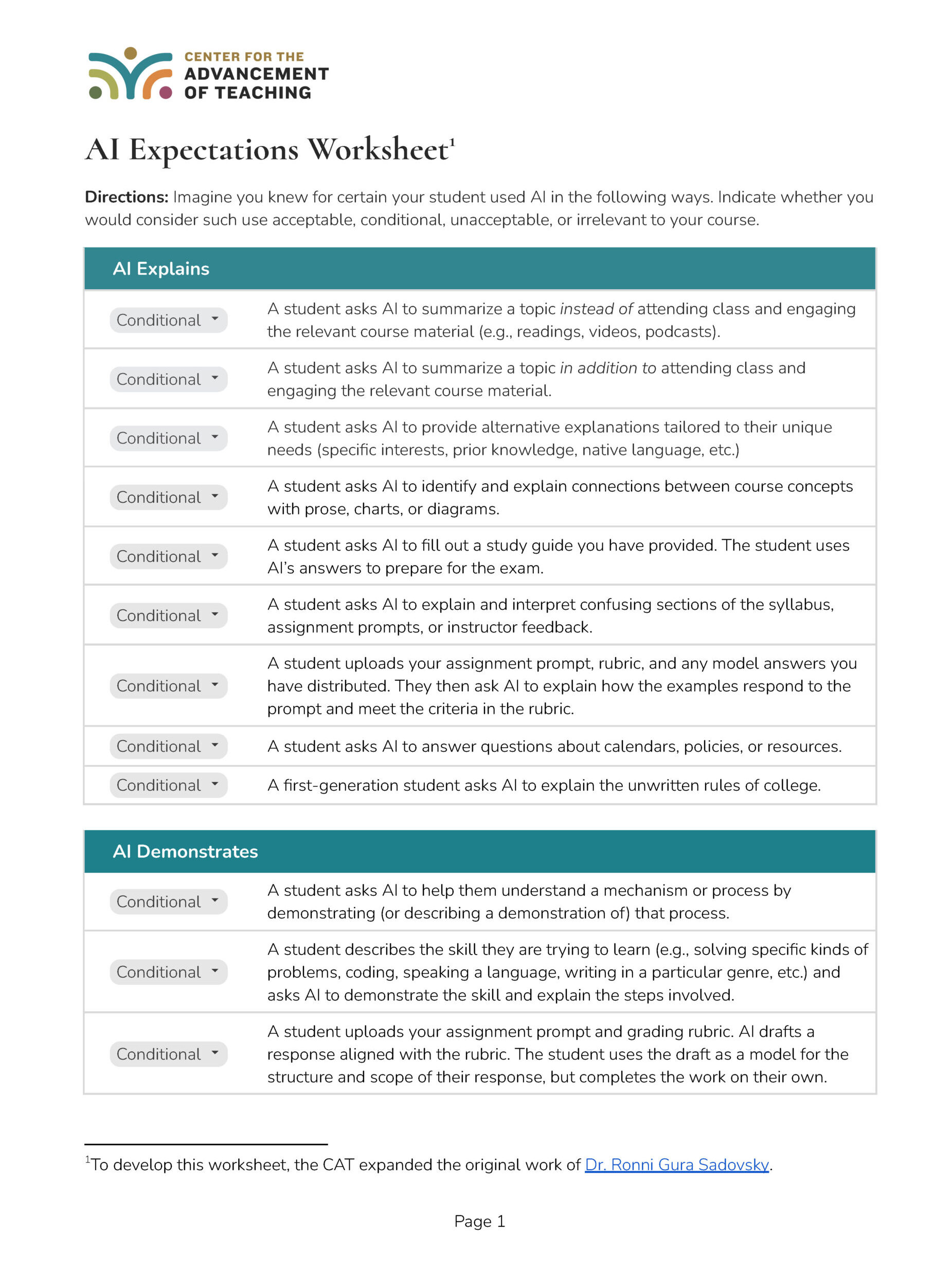Maintaining Student Engagement
Introduction
If there is anything we know about the learning process, it is that active engagement is necessary to build new knowledge. Whether students are learning new concepts or developing a new skill, they must actively work to secure meaningful development and growth.
In higher education, where instructors only spend a few hours a week with students, the assumption is that they will complete most of this work–and by extension most of their learning–on their own time. While some instructors expect students to develop their own plan for learning the material before exams, most develop structured activities to guide student engagement. Among other things, we ask students to read, to reflect, to collaborate, to solve, and to write.
In this context, we are rightly worried about what the development of artificial intelligence might mean for student engagement. Now that tools exist that can do much of the work we ask students to do, it is entirely possible that students might–intentionally or unintentionally–bypass the engagement that is necessary for learning.
Tools that allow us to create more efficiently are a great benefit when creation is the goal. But when we are learning, it is the process of creation that matters most, and efficiency can actually work against this goal.
We might think this means we should discourage, or even ban, the use of artificial intelligence in education. Yet, as with most things related to AI, matters are not so simple. While there are many scenarios in which the use of AI would undermine the work that is necessary for learning, there are also numerous ways AI might actually deepen or extend that engagement.
As instructors, we must reflect on our goals, the kinds of work that is necessary to achieve those goals, and what that means for various uses of AI. This page pulls together resources and activities to guide that reflection.

AI Can Do Homework. Now What?

AI Expectations Worksheet
To help you explore your initial intuitions, the CAT has created a worksheet that asks you to reflect on the appropriateness of a variety of potential uses of AI. You can make a copy of this worksheet by clicking the image or the “Make a Copy” button. Once you’ve completed the worksheet, reflect on how you made your decisions and share your thoughts in the accompanying form.

Drafting a Rationale
Our students are, like all of us, still learning about the benefits and risks of artificial intelligence. To help them see what we see, and motivate them to engage where they need to, we should be prepared to explain why we’ve taken the approach we have.
Reflecting on what you’ve learned thus far, take a moment to draft a rationale for your approach that you could share with students. If you need inspiration, we’ve shared Executive Director Betsy Barre’s FYS policy, as well as national and WFU-specific policy archives, below.
FYS Artificial Intelligence Policy
Betsy Barre (Fall 2023)
Syllabus Policies for Generative AI Tools
Crowdsourced Archive (Fall 2023)
AI Syllabus Statements at WFU
Fall 2023

Using AI to Increase Student Engagement

Assignment Ideas
Below you will find concrete examples of the prompts discussed in the previous video, as well as links to collections of hundreds of activities. We also invite you to share any activities you’ve developed.
Examples
Learning Torts via the Socratic Method
Guided Reflection on Nicomachean Ethics
Microeconomics Practice Quiz Questions
External Collections
Assigning AI: Seven Approaches for Students, with Prompts
Ethan and Lilach Mollick
101 Creative Ideas to Use AI in Education
Chrissi Nerantzi, et al.
ChatGPT Assignments to Use in Your Classroom Today
Kevin Yee, et al.
Learn with AI
University of Maine
Center for Innovation in Teaching and Learning
AI Pedagogy Project
metaLAB (at) Harvard
Share Your Ideas

Drafting an Assignment
Reflecting on what you’ve learned so far, develop one AI activity you would like to use in your courses to supplement your instruction and share it below.

Short Course Feedback
Please help us improve these short courses by providing feedback about your experience, what you learned, how it will impact your teaching, and what we could do better in the future.

